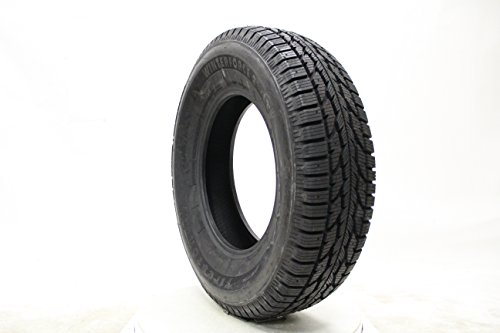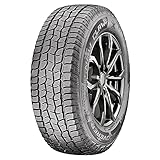Winter can be a beautiful season with snow-covered trees and cozy nights by the fire, but it also comes with its own set of challenges. One of the most important things to consider during winter is your vehicle’s safety on icy and snowy roads. That’s where winter tires come in! In this blog post, we’ll dive into everything you need to know about winter tires, including how they work, the different types available, factors to consider before buying them, benefits of using them and tips for setting them up. We’ll also answer some frequently asked questions about these must-have tires and give you our top picks based on Consumer Reports ratings so that you can make an informed decision when it comes to choosing the best winter tires for your vehicle. So let’s get started!
Top 10 Winter Tires
*Note: Score is based on our AI score (Editor’s choice and rating).
What Are Winter Tires?
Winter tires, also known as snow tires, are specially designed to provide better traction on cold and slippery roads. They feature a unique rubber compound that remains flexible even in extremely low temperatures, allowing them to grip the road surface effectively.
The tread pattern of winter tires is more aggressive than that of regular all-season or summer tires. It typically has deep grooves and channels that help expel slush, snow, and water from the tire’s contact area with the road. This helps prevent hydroplaning while improving braking performance.
Winter tires come in different sizes and types depending on the vehicle you drive and your driving needs. Some are studded with metal pins for increased grip on icy surfaces while others use advanced technology such as micro-pumps to maintain a good grip on wet or snowy roads.
When it comes to choosing winter tires for your vehicle, it’s crucial to select ones that fit your car make and model correctly. Using incorrect tire size can affect handling, stability and overall safety when driving in winter conditions.
In summary, winter/snow tires offer superior road-holding capabilities during harsh winters by providing better traction over ice-covered or snowy roads compared to other types of tyres available out there!
How Do Winter Tires Work?
Winter tires are designed to perform better in cold, snowy and icy conditions. The rubber compound used in winter tires is softer and more flexible than that of all-season or summer tires. This allows them to maintain their grip on the road even when it’s very cold outside.
The unique tread pattern of winter tires is also an important factor in how they work. They have wider grooves and deeper treads that help channel snow, slush, and water away from the tire’s surface. This reduces the risk of hydroplaning by providing better traction on wet surfaces.
Additionally, many winter tire models feature “sipes” – small cuts in the tread blocks that create extra biting edges for increased traction on ice. Some may also use studs or metal pieces embedded into the tire for added grip on hard-packed snow and ice.
It’s crucial to remember that while these features make a significant difference when driving in harsh weather conditions, no tire can guarantee complete safety on icy roads or during extreme weather events like blizzards. However, choosing a set of high-quality winter tires significantly improves your chances of staying safe while driving through challenging wintery conditions!
The Different Types of Winter Tires
When it comes to winter tires, there are three main types: studded, studless, and performance. Studded winter tires have metal studs embedded in the tread for added traction on ice. While they offer excellent grip on icy roads, they can be loud and damage road surfaces.
Studless winter tires use advanced rubber compounds and tread designs to provide increased grip on snow and ice without the need for metal studs. They are a popular choice due to their quiet ride and versatility in varying conditions.
Performance winter tires combine the benefits of both studded and studless options by using softer rubber compounds for improved grip while also providing better handling on dry or wet roads. However, they may not perform as well in extreme cold temperatures as other options.
It’s important to note that some regions have laws governing which types of winter tires can be used during certain times of the year. Make sure to check local regulations before making a purchase decision.
Factors to Consider Before Buying Winter Tires
When it comes to choosing the right set of winter tires for your vehicle, there are several factors that you need to consider. Here are some important things to keep in mind before making a purchase.
Firstly, make sure that the winter tires you choose are appropriate for your specific vehicle. This means checking the tire size and load capacity recommended by the manufacturer.
Secondly, consider the climate and driving conditions in your area. If you live in an area with heavy snowfall or icy roads, you may want to opt for studded or studless tires with deep treads designed specifically for those conditions. On the other hand, if you mainly drive on wet or slippery roads, performance winter tires might be a better choice.
Thirdly, think about your budget. Winter tires can vary greatly in price depending on their quality and features. While it may be tempting to go for cheaper options, investing in higher-quality winter tires could ultimately save you money by reducing accidents and prolonging the lifespan of both your car and its wheels.
Read reviews from trusted sources such as Consumer Reports or listen to recommendations from professionals like mechanics or tire dealerships before making a final decision on which winter tires to buy.
Benefits of Using Winter Tires
Using winter tires during the colder months can greatly benefit drivers in many ways. First and foremost, these tires are designed to provide more traction on snow and ice-covered roads, resulting in improved safety for both the driver and their passengers.
Winter tires also have a different type of rubber compound that remains flexible even at lower temperatures, allowing them to grip the road better than all-season or summer tires. This results in shorter stopping distances and better handling when navigating through winter conditions like slush or black ice.
Another benefit of using winter tires is that they can help extend the life of your other tires by reducing wear and tear during harsh weather conditions. Winter-specific tread patterns also help channel away water, slush, and snow from underneath your vehicle’s wheels which helps reduce hydroplaning risks.
Using winter tires may also save drivers money on insurance premiums since some insurance companies offer discounts for those who equip their vehicles with winter-rated tire options. Investing in a set of quality winter-rated tires is a smart decision for any driver looking to stay safe while driving during the cold season.
The Pros and Cons of Winter Tires
Winter tires are specifically designed to handle low temperatures, icy and snowy roads. But like anything in life, there are pros and cons to using them.
Pros:
Winter tires have deeper treads that provide better traction on snow and ice-covered roads. They also have a softer rubber compound that stays flexible in cold weather conditions, allowing the tire to grip the road more effectively.
Another benefit of winter tires is improved braking performance. With their superior traction capabilities, winter tires can help you stop your vehicle more quickly and safely when driving on slippery surfaces.
Cons:
One of the main drawbacks of winter tires is their cost. These specialized tires tend to be more expensive than all-season or summer options due to their unique construction materials and design features.
Additionally, because they’re softer than other types of tires, they tend to wear out faster on dry pavement during warmer seasons. So if you live in an area where winters aren’t very harsh or don’t last very long, you may not get as much use out of your winter tire investment.
While there are some downsides associated with using winter tires throughout the year, most experts agree that they’re essential for safe driving during cold-weather months – especially if you frequently travel through areas with lots of snow or ice on the ground.
Tips For Setting Up Your Winter Tires
Setting up your winter tires properly is essential to maximize their effectiveness and ensure your safety on the road. Here are some tips for setting up your winter tires:
1. Get them installed by a professional: While it’s possible to install winter tires yourself, it’s always better to have a professional do it. They have the experience and equipment needed to ensure that the installation is done correctly.
2. Check tire pressure regularly: Cold temperatures can cause tire pressure to drop, so it’s important to check your tire pressure regularly during the winter months. Make sure you keep them inflated according to manufacturer recommendations.
3. Rotate your tires: Rotating your tires helps ensure even wear and prolongs their lifespan. It’s recommended that you rotate them every 6,000-8,000 miles or as recommended by the manufacturer.
4. Store them properly when not in use: When spring comes around and you no longer need winter tires, make sure you store them properly in a cool, dry place away from direct sunlight.
By following these tips for setting up your winter tires, you’ll be able to get optimal performance out of them while also ensuring they last as long as possible!
FAQs
FAQs
1. Do I really need winter tires?
Yes, if you live in an area with harsh winters. Winter tires perform better than all-season or summer tires on snow and ice-covered roads.
2. Can I use winter tires year-round?
No, it is not recommended as they are designed specifically for cold weather conditions below 45°F (7°C). Using them in warmer temperatures can cause the rubber to wear out quickly.
3. How many winter tires do I need to buy?
It is recommended that you purchase four winter tires so that your vehicle has consistent traction and handling performance in slippery conditions.
4. What is the difference between studded and studless winter tires?
Studded winter tires have metal studs embedded in their treads which provide extra grip on ice, while studless versions rely on different types of tread patterns and materials to achieve traction on snow and ice.
5. When should I install my winter tires?
It’s generally recommended to switch to your winter set when temperatures consistently reach below 45°F (7°C), but this will depend on where you live and how severe the winters are.
6. How often should I replace my winter tires?
Winter tire lifespan varies depending on usage, but typical recommendations suggest replacing them after six years of use or when tread depth reaches 2/32nds of an inch
Conclusion
Winter tires are an essential investment for anyone who wants to stay safe on the road during the colder months. They provide better traction and handling in snowy and icy conditions, which can make all the difference when it comes to avoiding accidents.
When choosing winter tires, it’s important to consider factors such as size, type of tire, and budget. Consumer Reports is a great resource for finding highly rated options that fit your needs.
Remember that even with the best winter tires on your vehicle, it’s still important to drive cautiously in hazardous weather conditions. Always leave extra space between you and other vehicles, reduce your speed when necessary, and never take unnecessary risks on slippery roads.
Investing in high-quality winter tires might seem like an added expense at first but think about the potential cost of an accident or damage caused by not having them installed. As they say – better safe than sorry!
I’m Ella Andrews, owner of the website https://bestconsumerstips.com/
I give you valuable information about good products to help you choose the best product.









